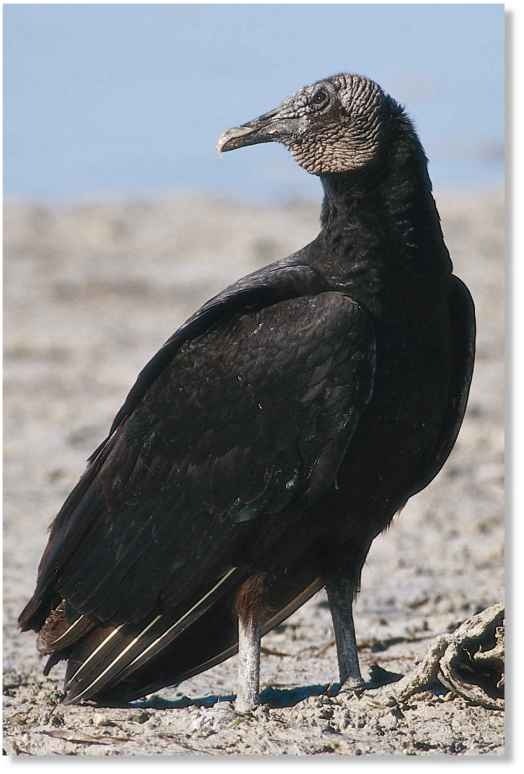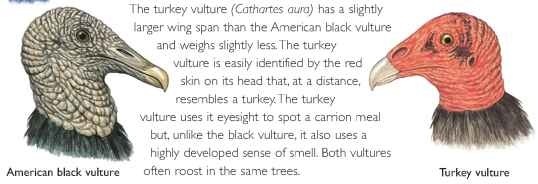ORDER
Falconiformes
FAMILY
Cathartidae
GENUS & SPECIES
KEY FEATURES
• Extremely keen eyesight allows this scavenger to look for food while soaring high in the sky
• Though it searches out the most putrid food, it does not rely on smell to find a meal, as some vultures do
• Performs a useful sanitation service by cleaning up garbage dumps and removing dead animals from highways
WHERE IN THE WORLD?
Found in the tropical and warm temperate regions of central and western Canada, throughout most of the U.S. and Mexico, and south to southern South America
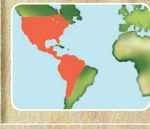
LIFECYCLE
The American black vulture spends most of its time soaring high above the ground, waiting for death to strike and leave behind the carrion it craves.
HABITAT
The black vulture lives in a variety of Western Hemisphere habitats, including coastal lowlands, forests, jungles and deserts. It flocks to open grasslands, the edges of cities and even to downtown urban areas, where the vulture rides the thermal air currents rising from the canyons of skyscrapers. No matter what the habitat, the birds are most likely to be found near something dead or rotting. The black vulture frequents city dumps, sewers, slaughterhouses and highways with roadkill. It also searches mangrove stands and other wooded areas where baby birds are left unprotected. After spending the day gliding and circling, it will return to roost, usually in tall trees. When not feeding, the black vulture is somewhat social, and is often found roosting with other birds, especially turkey vultures.
In the treetops Resting in a tree, the vulture searches for prey.
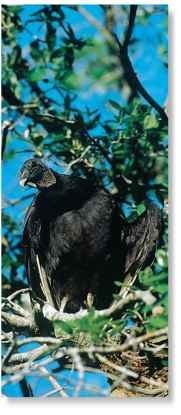
On hot days, the black vulture cools off by wetting its legs with its urine.
The black vulture returns to roost when the air cools and the warm thermal currents dissipate.
Before sanitation services were developed, black vultures were commonplace at meat markets throughout the U.S. where they cleaned up scraps, keeping the areas clean and free of disease.
CONSERVATION
All members of the vulture family have been protected by federal law since 1972, and populations have remained stable. Black vultures previously faced threats from farmers, who believed the birds carried a virus that caused hog cholera, and the vultures were often shot. One type of vulture, the California condor, was near extinction, but preservation efforts have helped rebuild populations.
BREEDING
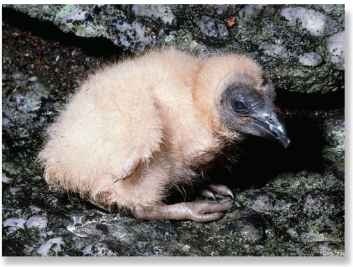
A Helpless beginning
The black vulture is born helpless and completely dependent upon its parents for nourishment.
Breeding begins in January and continues until July. Male black vultures compete with other males for a female’s attention, strutting past her with their wings partially spread and rapidly bobbing their heads. The female picks a suitable mate and a pair-bond forms. After mating, the pair usually does not build a nest. Instead, eggs are laid in hollow bases of trees or stumps, seldom more than 10-15′ off the ground, or even in crannies of tall city buildings. Eggs number from 1 to 3, and have green, blue or olive tint and brown splotches. Both parents share incubation duty for 32-39 days. Nestlings are born helpless and naked but quickly acquire downy feathers. The parents bring back digested food and regurgitate it into the chicks’ mouths. Chicks can fly after 63-70 days, but usually do not leave the nest until they are 2-3 months old.
BEHAVIOR
Black vultures begin their day soaring on air thermals in their continual search for food. They glide in circles and flap their wings periodically Groups can range in number from a few vultures to over 100 birds. When food is spotted,the black vultures pour down from the sky. When it is not flying, the vulture often perches with its wings spread in the sun. The black vulture will mix with turkey vultures at roosting areas, usually in tall trees. In North America, the black vulture migrates to warmer climates, where it spends the winter.
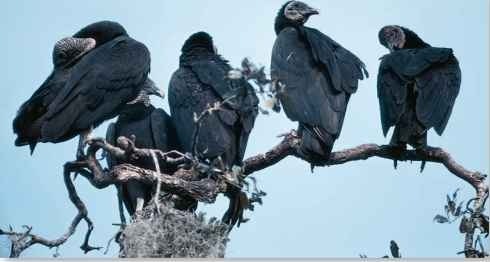
A Communal roosting
The black vulture can be social when not eating and is often found roosting in trees with other vultures.
FOOD & FEEDING
Most of the black vulture’s diet consists of carrion and garbage; it supplements this menu with bird nestlings, such as baby herons, and young turtles that have just hatched. When pressed for food, the black vulture will also attack larger live prey, such as calves, lambs, skunks and opossums.The vulture uses its thick bill with a hooked end to tear into flesh.Though it has strong claws for gripping prey, its talons are not sharp enough for it to strike from the air, as a hawk or eagle can. Black vultures congregate around a kill and grab what they can.
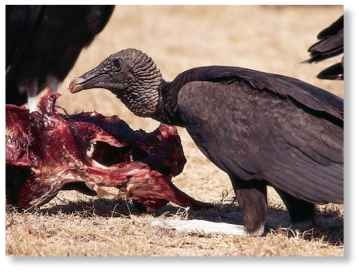
PICK AND CHOOSE

1 A dump of delights
A group of black vultures searches a garbage dump for a morning snack, while a single bird suns itself.
2 Turtle tidbits
The black vulture snatches up baby turtles just after they hatch, before they can reach the safety of the sea.
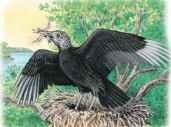
3 Nest robber…
Raiding a colony of egrets and herons, a vulture makes quick work of an unguarded nestling in its mangrove home.
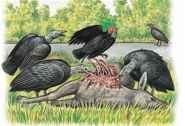
4 A course of carrion
A dead donkey makes an inviting meal as black vultures drive away two turkey vultures trying to join the feast.
PROFILE
American Black Vulture
The American black vulture uses its keen eyesight to spot its carrion meals; its bullying nature keeps others away while it eats.
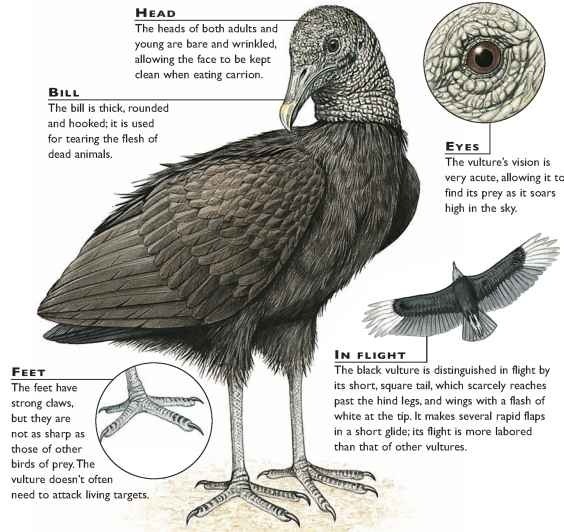
CREATURE COMPARISONS
| VITAL-STATISTICS | |
| Weight | 4.5-6 lbs. |
| Length | 23-27″ |
| Wingspan | 54-60″ |
| Sexual Maturity | Unknown |
| Breeding Season | January-July |
| Number of Eggs | 1-3, usually 2 |
| Incubation Period | 32-39 days |
| Fledging Period | 63-70 days |
| Breeding Interval | 1 year |
| Typical Diet | Mostly carrion; young herons, ducks, lambs; rotten and ripe fruit and vegetables |
| Lifespan | 11 years |
RELATED SPECIES
• The family Cathartidae is limited to the Western Hemisphere and includes 7 species in two genera: the Andean condor (Vultur gryphus), California condor (V. californianus), king vulture (Sarcoramphus papa), yellow-headed vulture (C. burrovianus), greater yellow-headed vulture (C. melambtotus), turkey vulture (C. aura) and black vulture.The California condor is among the rarest.
